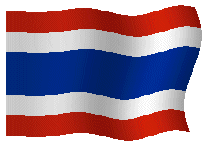The Golden Buddha, officially titled Phra Phuttha Maha Suwan Patimakon, is the world's biggest solid gold statue.. It is located in the temple of Wat Traimit. In the early 1930s, reconstruction works in the banks of the Chao Phraya river near Chinatown, required the destruction of an old abandoned temple that housed a stucco-painted gold statue of Buddha. Despite the fact that the statue was not so attractive, its destruction was not an option. Thus it was decided to move it to Wat Traimit, a pagoda of minor relevance (like hundreds of other Buddhist temples that exist in Bangkok), keeping the statue in Chinatown. The temple didn't have a building big enough to house the statue, so it was kept for 20 years under a simple tin roof.
In 1955 a new building was built and the monks
decided to install the statue inside it. A crane was supposed to
move the statue carefully, but a cable broke and the statue fell in
the mud, an event that was seen as a bad omen by the workers, who
ran away from the place, leaving the statue on the soil. It was the
rainy season and, as for confirming the bad omen, a terrible storm
came and it lasted the whole night, flooding the whole city.
At the dawn of the next day, the abbot of the temple came to evaluate the damage and started removing the mud. He observed that the wet plaster was cracked and under it was a statue made of solid gold.
It is thought that the statue came from Ayutthaya and it was disguised under plaster to hide it from the Burmese, who were besieging the city. After being moved to Bangkok, its true composition was forgotten for almost 200 years.
The statue is 3 metres high and weights 5.5 tonnes. It is made in the Sukhothai Dynasty style, and is thought to have been made during the Sukhothai period in the 13th century.

